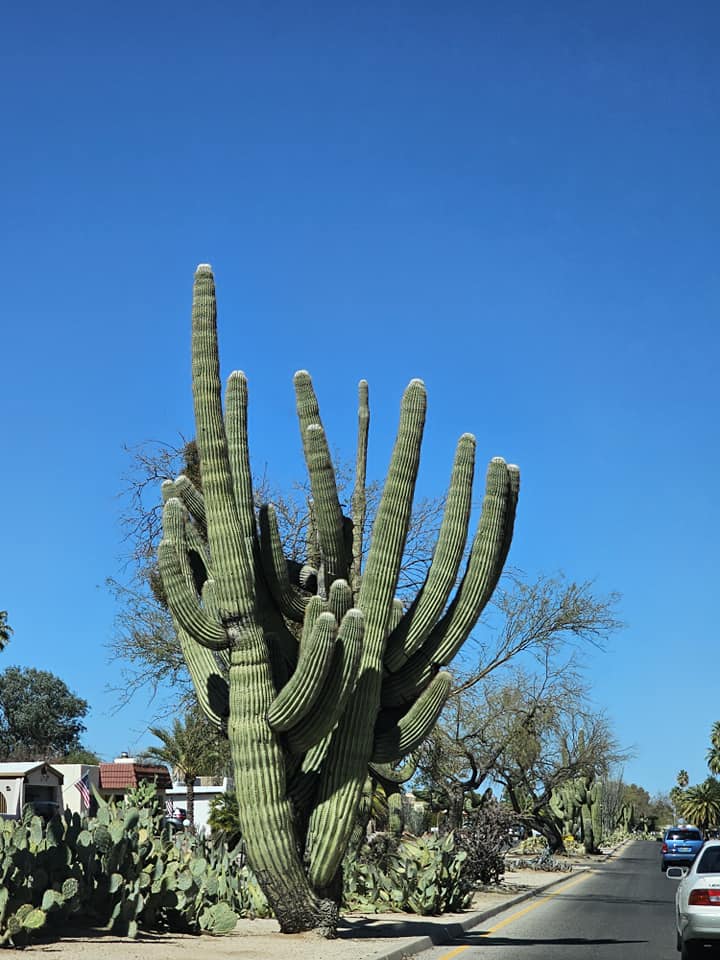Jumping Cholla Cactus “🌵 The Enigmatic Desert Sentinel
The Jumping Cholla Cactus, scientifically named Cylindropuntia fulgida, is one of the most recognizable and fascinating cacti of the Sonoran Desert. It earns its nickname “”Jumping Cholla”” because of its tendency for its spiny segments to detach easily, seemingly “”jumping”” onto passersby who brush against it. Though this is an evolutionary defense mechanism, it contributes to the cactus’s aura of caution and wonder.
With its spiny, cylindrical stems, dramatic silhouette, and adaptation to arid environments, the Jumping Cholla is a staple in desert landscapes, xeriscaping, and drought-tolerant gardens.
🌿 Botanical Overview
Scientific Name: Cylindropuntia fulgida
Common Names: Jumping Cholla, Chain Fruit Cholla, Hanging Chain Cholla
Family: Cactaceae
Native Range: Sonoran Desert (Arizona, California, Northern Mexico)
Type: Perennial cactus
Height: 6–15 feet tall
Spread: 5–10 feet wide
Stems: Cylindrical, jointed, covered in silvery-white spines
Flowers: Pink to lavender, bloom in late spring to early summer
Fruit: Chain of hanging greenish fruits that remain on the plant for years, giving rise to the “”Chain Fruit”” name
☀️ Sunlight and Climate Requirements
Sunlight:
Requires full sun — at least 6–8 hours of direct light daily
Insufficient sunlight results in weak, etiolated growth
Temperature:
Thrives in hot, arid climates, between 25–40°C (77–104°F)
Tolerates cold snaps down to –9°C (15°F)
USDA Hardiness Zones:
8b to 11
☀️ Best suited for desert gardens, rockeries, and xeriscaping projects.
💧 Watering Needs
Young Plants:
Water deeply once every 2–3 weeks during the first growing season
Let the soil dry completely between watering
Mature Plants:
Extremely drought-tolerant
Water once a month in prolonged drought or extreme heat
Skip watering in winter dormancy
💧 Overwatering is the biggest threat, leading to root rot and fungal diseases.
🌱 Soil Requirements
Soil Type:
Requires well-draining, sandy or rocky soil
Ideal in cactus/succulent mix or natural desert soil
pH Range: Slightly acidic to neutral (6.0 to 7.5)
🌿 For container planting, ensure the pot has ample drainage holes and use coarse materials like pumice or perlite.
🌾 Fertilizer Needs
Growing Season (Spring to Summer):
Fertilize once every 6–8 weeks with a low-nitrogen cactus fertilizer (e.g., 5-10-10)
Avoid high nitrogen which promotes soft, weak growth
Fall and Winter:
No fertilization needed during dormancy
✂️ Pruning and Maintenance
Pruning:
Rarely required, but can be done to:
Shape the plant
Remove damaged or hazardous segments
Use long-handled pruners and thick gloves due to sharp spines
Maintenance Tips:
Clear fallen joints to prevent accidental spread or injury
Keep paths clear of dislodged segments
🛡️ Its spines have a barbed tip that easily embeds into skin or clothing — handle with extreme caution.
🌿 Propagation
Natural Propagation:
Through detached stem segments which root easily when they contact soil
Manual Propagation:
Allow cut segments to callous for a week, then plant in dry, sandy soil
Avoid watering for the first 2 weeks to prevent rot
🌱 Seed propagation is possible but less common due to the ease of segment rooting.
🐛 Pests and Diseases
Resilient, but can occasionally suffer from:
Scale insects
Spider mites
Fungal infections if overwatered
🛡️ Use insecticidal soap or neem oil if pests appear. Always maintain dry conditions and airflow.
🌵 Uses and Landscape Value
Ornamental Use:
Featured in desert landscapes, xeriscaping, and cactus gardens
Adds vertical structure and dramatic texture
Ecological Benefits:
Provides shelter for desert wildlife, including birds like the cactus wren
The fruits are a food source for animals
📸 A popular subject for desert photography due to its form and striking silhouette at sunset.
✅ Conclusion
The Jumping Cholla Cactus is both awe-inspiring and cautionary, a true desert survivor that thrives in harsh, dry conditions. With its resilient nature, iconic appearance, and fascinating propagation, it’s a valuable addition to any dry landscape or cactus collection.
However, its dangerous barbed spines make it more suitable for wild areas, cactus gardens, or landscapes away from foot traffic.
“





Reviews
There are no reviews yet.